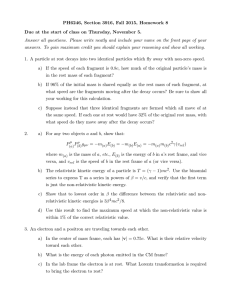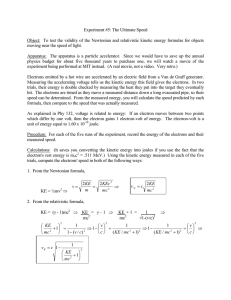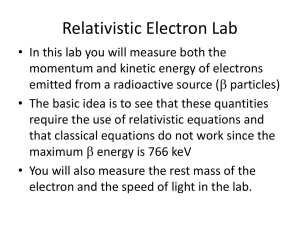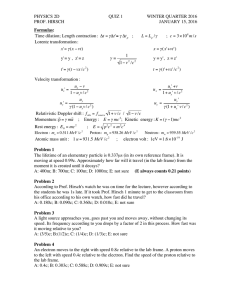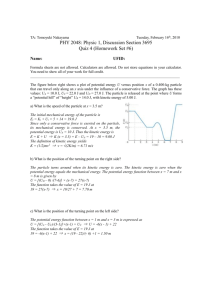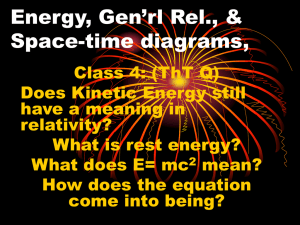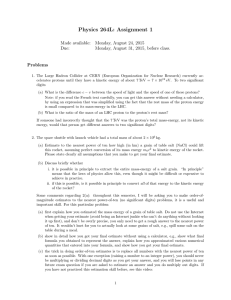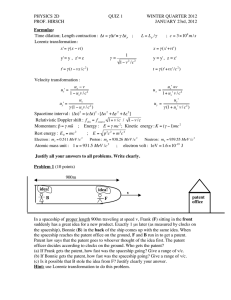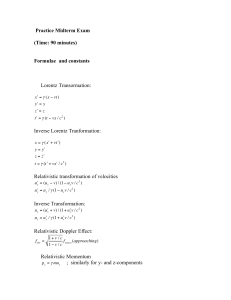PHY4222, Section 3801, Spring 2016, Homework 11
advertisement
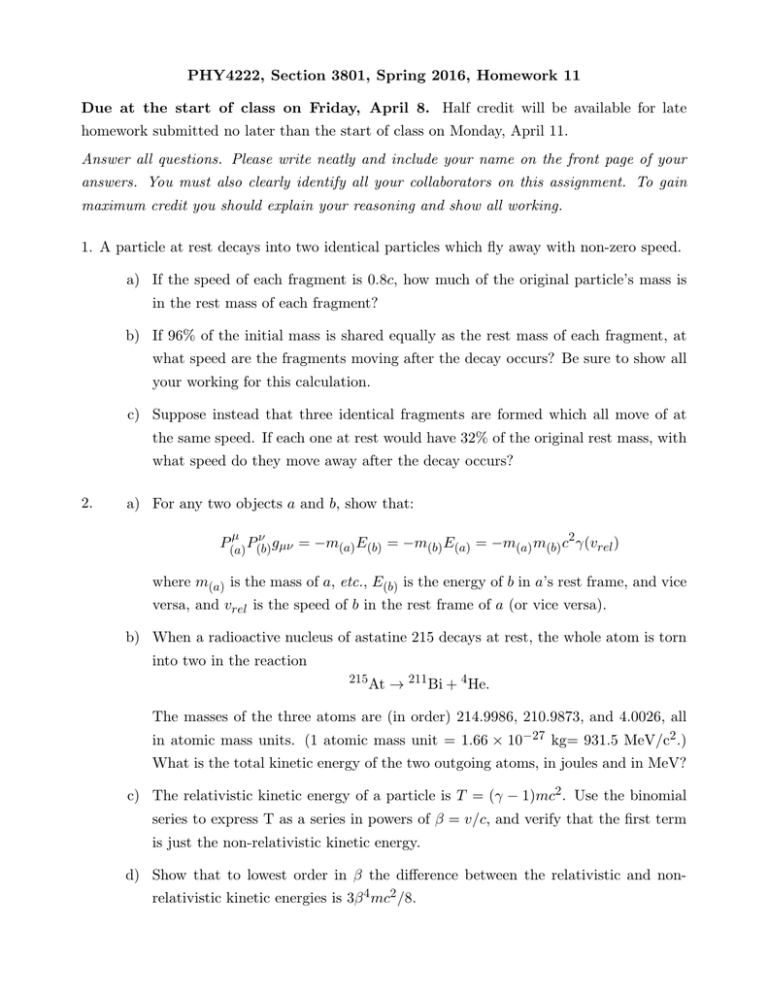
PHY4222, Section 3801, Spring 2016, Homework 11 Due at the start of class on Friday, April 8. Half credit will be available for late homework submitted no later than the start of class on Monday, April 11. Answer all questions. Please write neatly and include your name on the front page of your answers. You must also clearly identify all your collaborators on this assignment. To gain maximum credit you should explain your reasoning and show all working. 1. A particle at rest decays into two identical particles which fly away with non-zero speed. a) If the speed of each fragment is 0.8c, how much of the original particle’s mass is in the rest mass of each fragment? b) If 96% of the initial mass is shared equally as the rest mass of each fragment, at what speed are the fragments moving after the decay occurs? Be sure to show all your working for this calculation. c) Suppose instead that three identical fragments are formed which all move of at the same speed. If each one at rest would have 32% of the original rest mass, with what speed do they move away after the decay occurs? 2. a) For any two objects a and b, show that: µ ν P(a) P(b) gµν = −m(a) E(b) = −m(b) E(a) = −m(a) m(b) c2 γ(vrel ) where m(a) is the mass of a, etc., E(b) is the energy of b in a’s rest frame, and vice versa, and vrel is the speed of b in the rest frame of a (or vice versa). b) When a radioactive nucleus of astatine 215 decays at rest, the whole atom is torn into two in the reaction 215At → 211 Bi + 4 He. The masses of the three atoms are (in order) 214.9986, 210.9873, and 4.0026, all in atomic mass units. (1 atomic mass unit = 1.66 × 10−27 kg= 931.5 MeV/c2 .) What is the total kinetic energy of the two outgoing atoms, in joules and in MeV? c) The relativistic kinetic energy of a particle is T = (γ − 1)mc2 . Use the binomial series to express T as a series in powers of β = v/c, and verify that the first term is just the non-relativistic kinetic energy. d) Show that to lowest order in β the difference between the relativistic and nonrelativistic kinetic energies is 3β 4 mc2 /8. e) Use this result to find the maximum speed at which the non-relativistic value is within 1% of the correct relativistic value. 3. An electron and a positron are traveling towards each other. a) In the center of mass frame, each has |v| = 0.75c. What is their relative velocity toward each other. b) What is the energy of each photon emitted in the CM frame? c) In the lab frame the electron is at rest. What Lorentz transformation is required to bring the electron to rest? d) In the lab frame, what is the energy of each of the emitted photons? 2
